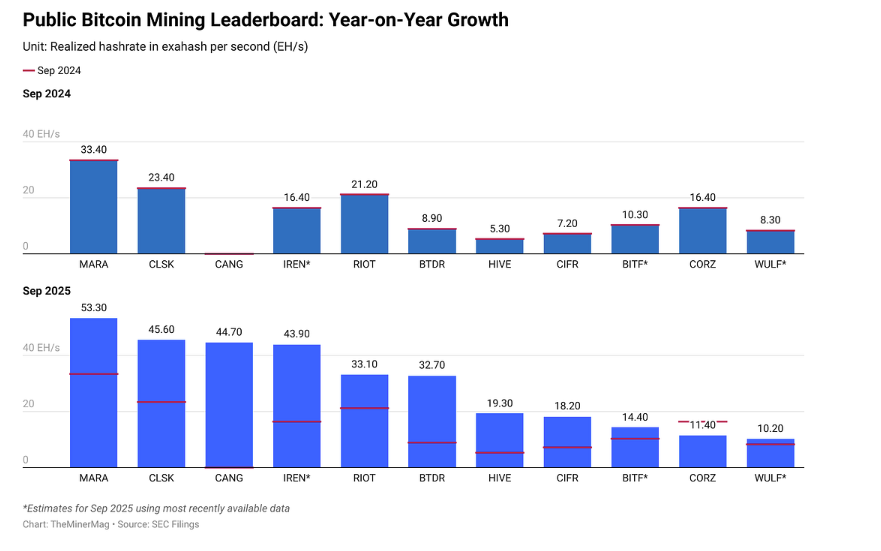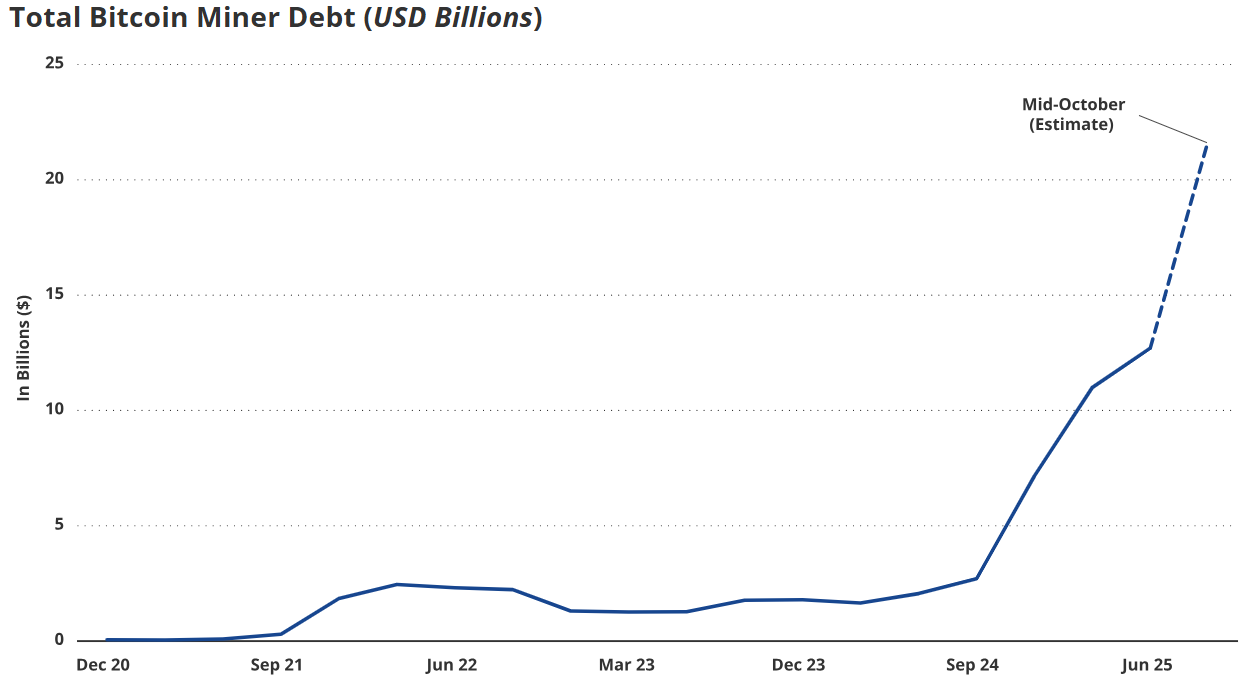
Emerging Bitcoin Miners Transform Post-Halving Landscape
Smaller Bitcoin mining operations are increasing their hashrate and incurring debt as competition escalates in the post-halving environment.
The competition among Bitcoin miners is intensifying, with smaller mining operations, often referred to as tier-2 players, increasing their hashrate significantly in the wake of the 2024 halving event, resulting in a more equitable competitive landscape.
According to insights from The Miner Mag, operators like Cipher Mining, Bitdeer, and HIVE Digital have experienced noteworthy gains in their realized hashrate following years of infrastructure development, bringing them closer to industry stalwarts such as MARA Holdings, CleanSpark, and Cango.
“Their rise underscores how the public miners’ middle tier — which once lagged considerably — has swiftly ramped up production post-2024 halving,” stated The Miner Mag in its most recent newsletter.
While MARA, CleanSpark, and Cango remain the top three public miners, competitors like IREN, Cipher, Bitdeer, and HIVE Digital have reported considerable annual increments in their realized hashrate.
As of September, the collective hashrate of the leading public miners reached an impressive 326 exahashes per second (EH/s), more than double what it was a year ago. They now constitute nearly one-third of Bitcoin’s entire network hashrate.
 Year-over-year growth in realized hashrate
Source: The Miner Mag
Year-over-year growth in realized hashrate
Source: The Miner Mag
Hashrate defines the overall computational power miners provide for securing the Bitcoin network, while realized hashrate reflects actual on-chain performance, quantifying the speed at which valid blocks are mined successfully.
This metric is crucial for publicly listed miners as it indicates operational performance and potential revenues, especially significant ahead of the upcoming third-quarter earnings announcements.
Bitcoin Miners Accelerate Their Competition
Amid the struggle for market dominance, Bitcoin mining firms are accruing unprecedented levels of debt to invest in advanced mining rigs, artificial intelligence setups, and other capital-heavy projects.
As per research conducted by VanEck, total debts across the sector have surged to $12.7 billion, a notable increase from $2.1 billion just a year ago. Researchers emphasize the necessity for miners to consistently invest in the latest technology to keep pace with Bitcoin’s overall hashrate and avoid lagging behind competitors.
 The growing debt of Bitcoin miners
Source: VanEck
The growing debt of Bitcoin miners
Source: VanEck
Several mining entities are exploring opportunities in artificial intelligence and high-performance computing in an effort to diversify revenue avenues and mitigate profit reductions that followed the 2024 Bitcoin halving, which led to a decrease in block rewards to 3.125 BTC.
Related Articles:
